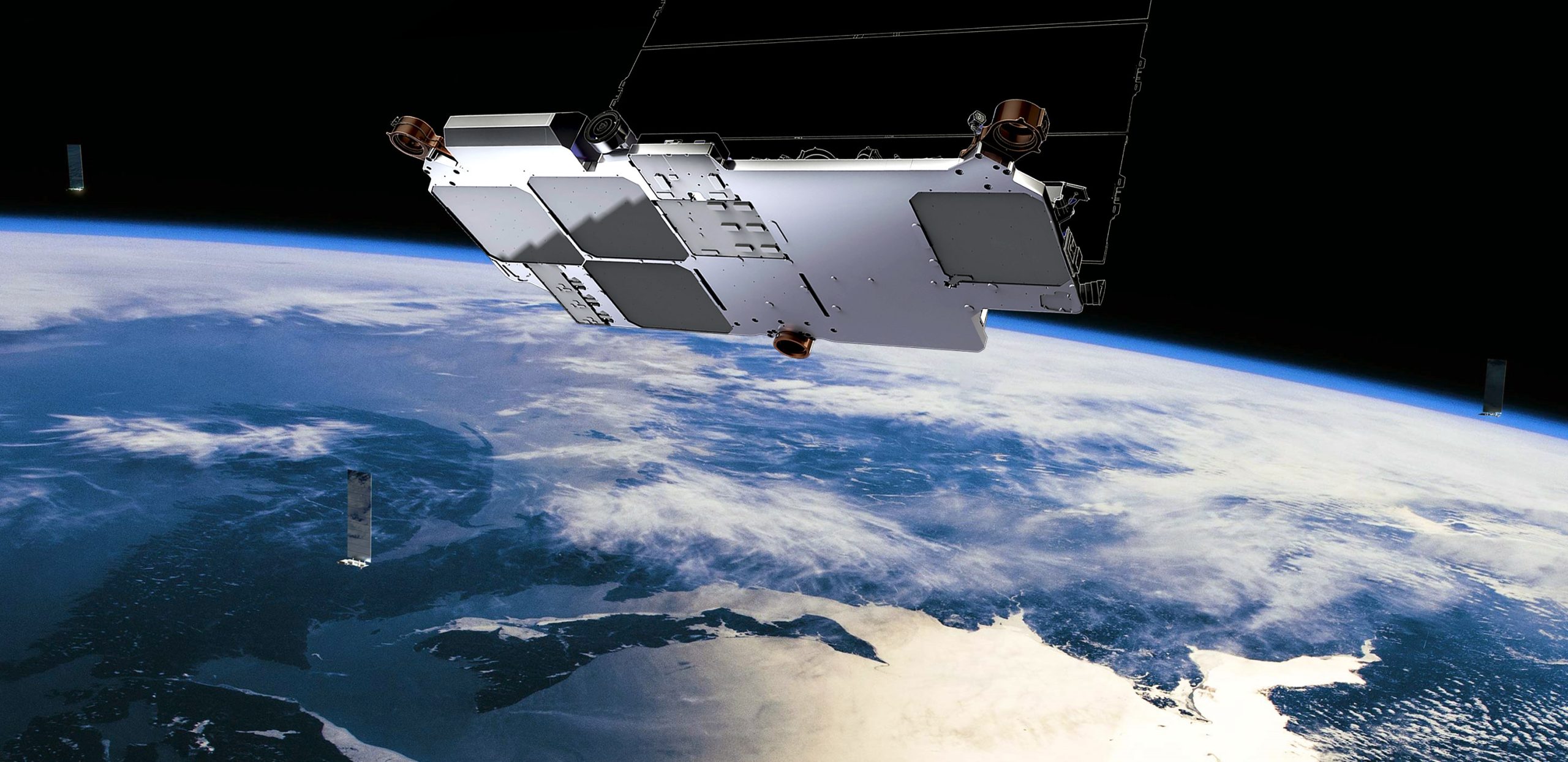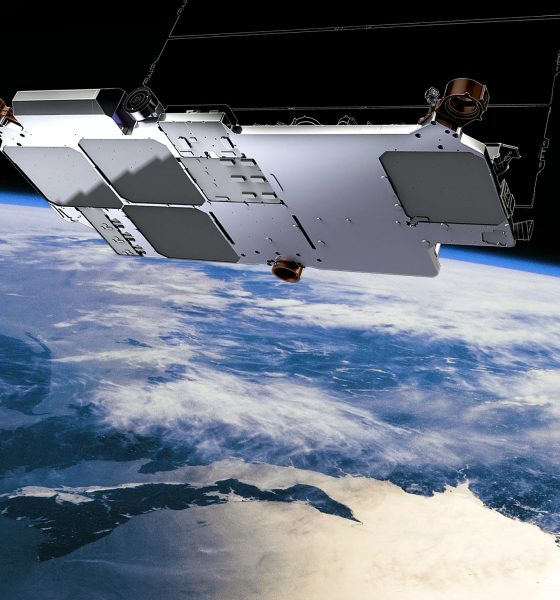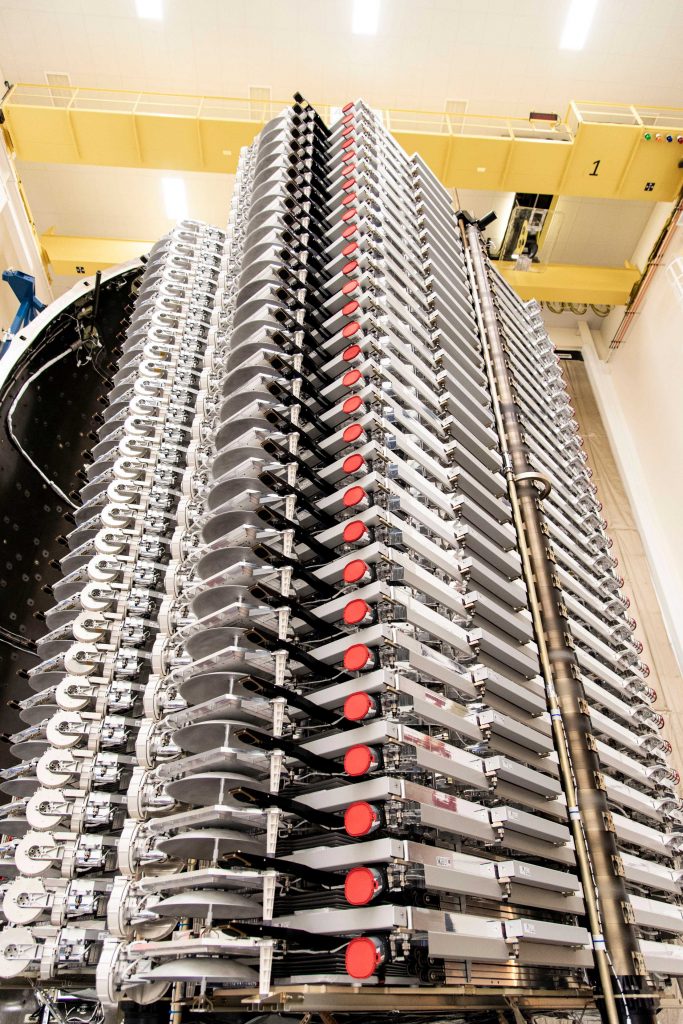

News
SpaceX Starlink ‘space lasers’ successfully tested in orbit for the first time
SpaceX has revealed the first successful test of Starlink satellite ‘space lasers’ in orbit, a significant step along the path to an upgraded “Version 2” constellation.
In simple terms, those “lasers” are a form of optical (light-based) communication with an extremely high bandwidth ceiling, potentially permitting the wireless, high-speed transfer of vast quantities of data over equally vast distances. Of the ~715 Starlink satellites SpaceX has launched over the last 16 months, some 650 are operational Version 1 (v1.0) spacecraft designed to serve a limited group of customers in the early stages of the constellation. Prior to SpaceX’s September 3rd announcement, it was assumed that none of those satellites included laser interlinks, but now we know that two spacecraft – presumably launched as part of Starlink-9 or -10 in August – have successfully tested prototype lasers in orbit.
Ever since CEO Elon Musk first revealed SpaceX’s satellite internet ambitions in early 2015, those plans have included some form of interconnection between some or all of the thousands of satellites the company would need to launch. While a functional low Earth orbit (LEO) satellite internet constellation doesn’t intrinsically need to have that capability to function or be successful, inter-satellite links offer some major benefits in return for the added spacecraft complexity and cost.
The single biggest draw of laser interlinks is arguably the major reduction in connection latency (ping) they can enable compared to a similar network without it. By moving a great deal of the work of networking into orbit, the data transported on an interlinked satellite network would theoretically require much less routing to reach an end-user, physically shortening the distance that data has to travel. The speed of light (300,000 kilometers per second) may be immense but even on the small scale of the planet Earth, with the added inefficiencies inherent in even the best fiber optic cables, routing data to and from opposite ends of the planet can still be slowed down by high latency.
Without interlinks, Starlink and internet constellations like it function by acting more like a go-between for individual users and fixed ground stations that then connect those users to the rest of the Internet. Under that regime, the performance of constellations is inherently filtered through the Earth’s existing internet infrastructure and is necessitates the installation of ground stations relatively close to network users. If a satellite without interlinks can ‘see’ (and thus communicate with) customers but can’t ‘see’ a ground station from the same orbital vantage point, it is physically incapable of connecting those communications with the rest of the internet.
This isn’t a showstopper. As SpaceX’s very early Starlink constellation has already demonstrated through beta testers, the network is already capable of serving individual users 100 megabits per second (Mbps) of bandwidth with latency roughly comparable to average wired connections. The result: internet service that is largely the same as (if not slightly worse and less convenient than) existing fiber options. To fully realize a LEO internet constellation’s potential of being much better than fiber, high-performance laser interlinks are thus a necessity.

With laser interlinks, the aforementioned connection dropout scenario would be close to impossible. In the event that an active satellite finds itself serving customers without a ground station in reach, it would route those forlorn data packages by laser to a different satellite with immediate ground station access. One step better, with enough optimization, user communications can be routed by laser to and from the ground stations physically closest to the user and their traffic destination. With a free-floating network of satellites communication in vacuum along straight lines, nothing short of a direct, straight fiber line could compete with the resulting latency and routing efficiency.
Interlinks offer one last significant benefit: by sacrificing latency, an interlinked network will be able to service a larger geographic area by allowing the connections of users far from ground stations to be routed through other satellites to the nearest ground station. Large-scale ground station installation and the international maze of permitting it requires can take an inordinate amount of time and resources for nascent satellite communications constellations
SpaceX’s fully-interlinked Starlink Version 2 constellation is targeting latency as low as 8 milliseconds and hopes to raise the bandwidth limit of individual connections to a gigabit or more. As soon as a viable Starlink v2.0 satellite design has been finalized and tested in orbit, SpaceX will likely end v1.0 production and launches, entering the second phase of iteration after the v0.9 to v1.0 jump.
Check out Teslarati’s Marketplace! We offer Tesla accessories, including for the Tesla Cybertruck and Tesla Model 3.

News
Elon Musk’s Grokipedia surges to 5.6M articles, almost 79% of English Wikipedia
The explosive growth marks a major milestone for the AI-powered online encyclopedia, which was launched by Elon Musk’s xAI just months ago.

Elon Musk’s Grokipedia has grown to an impressive 5,615,201 articles as of today, closing in on 79% of the English Wikipedia’s current total of 7,119,376 articles.
The explosive growth marks a major milestone for the AI-powered online encyclopedia, which was launched by Elon Musk’s xAI just months ago. Needless to say, it would only be a matter of time before Grokipedia exceeds English Wikipedia in sheer volume.
Grokipedia’s rapid growth
xAI’s vision for Grokipedia emphasizes neutrality, while Grok’s reasoning capabilities allow for fast drafting and fact-checking. When Elon Musk announced the initiative in late September 2025, he noted that Grokipedia would be an improvement to Wikipedia because it would be designed to avoid bias.
At the time, Musk noted that Grokipedia “is a necessary step towards the xAI goal of understanding the Universe.”
Grokipedia was launched in late October, and while xAI was careful to list it only as Version 0.1 at the time, the online encyclopedia immediately earned praise. Wikipedia co-founder Larry Sanger highlighted the project’s innovative approach, noting how it leverages AI to fill knowledge gaps and enable rapid updates. Netizens also observed how Grokipedia tends to present articles in a more objective manner compared to Wikipedia, which is edited by humans.
Elon Musk’s ambitious plans
With 5,615,201 total articles, Grokipedia has now grown to almost 79% of English Wikipedia’s article base. This is incredibly quick, though Grokipedia remains text-only for now. xAI, for its part, has now updated the online encyclopedia’s iteration to v0.2.
Elon Musk has shared bold ideas for Grokipedia, including sending a record of the entire knowledge base to space as part of xAI’s mission to preserve and expand human understanding. At some point, Musk stated that Grokipedia will be renamed to Encyclopedia Galactica, and it will be sent to the cosmos.
“When Grokipedia is good enough (long way to go), we will change the name to Encyclopedia Galactica. It will be an open source distillation of all knowledge, including audio, images and video. Join xAI to help build the sci-fi version of the Library of Alexandria!” Musk wrote, adding in a later post that “Copies will be etched in stone and sent to the Moon, Mars and beyond. This time, it will not be lost.”
News
Tesla Model 3 becomes Netherlands’ best-selling used EV in 2025
More than one in ten second-hand electric cars sold in the country last year was a Tesla Model 3.

The Tesla Model 3 became the most popular used electric car in the Netherlands in 2025, cementing its dominance well beyond the country’s new-car market.
After years at the top of Dutch EV sales charts, the Model 3 now leads the country’s second-hand EV market by a wide margin, as record used-car purchases pushed electric vehicles further into the mainstream.
Model 3 takes a commanding lead
The Netherlands recorded more than 2.1 million used car sales last year, the highest level on record. Of those, roughly 4.8%, or about 102,000 vehicles, were electric. Within that growing segment, the Tesla Model 3 stood far ahead of its competitors.
In 2025 alone, 11,338 used Model 3s changed hands, giving the car an 11.1% share of the country’s entire used EV market. That means more than one in ten second-hand electric cars sold in the country last year was a Tesla Model 3, Auto Week Netherlands reported. The scale of its lead is striking: the gap between the Model 3 and the second-place finisher, the Volkswagen ID3, is more than 6,700 vehicles.
Rivals trail as residual values shape rankings
The Volkswagen ID.3 ranked a distant second, with 4,595 used units sold and a 4.5% market share. Close behind was the Audi e-tron, which placed third with 4,236 registrations. As noted by Auto Week Netherlands, relatively low residual values likely boosted the e-tron’s appeal in the used market, despite its higher original price.
Other strong performers included the Kia Niro, the Tesla Model Y, and the Hyundai Kona, highlighting continued demand for compact and midsize electric vehicles with proven range and reliability. No other model, however, came close to matching the Model 3’s scale or market presence.
News
Tesla Model Y Standard Long Range RWD launches in Europe
The update was announced by Tesla Europe & Middle East in a post on its official social media account on X.

Tesla has expanded the Model Y lineup in Europe with the introduction of the Standard Long Range RWD variant, which offers an impressive 657 km of WLTP range.
The update was announced by Tesla Europe & Middle East in a post on its official social media account on X.
Model Y Standard Long Range RWD Details
Tesla Europe & Middle East highlighted some of the Model Y Standard Long Range RWD’s most notable specs, from its 657 km of WLTP range to its 2,118 liters of cargo volume. More importantly, Tesla also noted that the newly released variant only consumes 12.7 kWh per 100 km, making it the most efficient Model Y to date.
The Model Y Standard provides a lower entry point for consumers who wish to enter the Tesla ecosystem at the lowest possible price. While the Model 3 Standard is still more affordable, some consumers might prefer the Model Y Standard due to its larger size and crossover form factor. The fact that the Model Y Standard is equipped with Tesla’s AI4 computer also makes it ready for FSD’s eventual rollout to the region.
Top Gear’s Model Y Standard review
Top Gear‘s recent review of the Tesla Model Y Standard highlighted some of the vehicle’s most notable features, such as its impressive real-world range, stellar infotainment system, and spacious interior. As per the publication, the Model Y Standard still retains a lot of what makes Tesla’s vehicles well-rounded, even if it’s been equipped with a simplified interior.
Top Gear compared the Model Y Standard to its rivals in the same segment. “The introduction of the Standard trim brings the Model Y in line with the entry price of most of its closest competition. In fact, it’s actually cheaper than a Peugeot e-3008 and costs £5k less than an entry-level Audi Q4 e-tron. It also makes the Ford Mustang Mach-E look a little short with its higher entry price and worse range,” the publication wrote.








